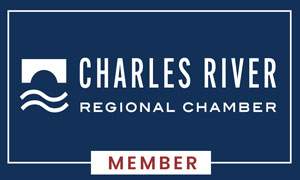SCOTUS Sides Against Vermont
The Supreme Court ruled 6-2 on March 1st that self-insured employee plans cannot be forced to disclose to the state data regarding what they pay in medical claims (Gobeille v. Liberty Mutual Insurance Co. No. 14-181, March 1, 2016). SCOTUS decided that Vermont overreached in contradiction of federal reporting requirements in trying to gather and analyze the claims data from Liberty Mutual’s self-insured employee plan. Justice Kennedy, writing for the court, said that Vermont’s reporting law was inconsistent with federal goals of a “uniform national scheme” for collecting claims data. Vermont had argued that they needed the data from all payers, including self-funded employee plans, in order to have an accurate and useful database of prices for consumers to compare different plans.
Liberty Mutual argued, and the Court agreed, that multiple state reporting requirements that differ from the federal could subject them to burdensome administrative, financial, and legal liabilities. This SCOTUS ruling ensures that ERISA plans will only be subject to a singular federal reporting requirement, reducing needless bureaucracy and costly organizational changes. This is especially true of plans that operate nationally and thus would be subject to 50 different states’ requirements. The SCOTUS decision affects 17 states in addition to Vermont who currently have similar reporting requirements.
Justice Breyer’s concurrence explained that the Department of Labor has the authority to impose additional reporting requirements on the states and could very well work with the states in the next few years to increase medical claims reporting data on all plans, therefore accomplishing what Vermont was seeking in this case. The drawback of this method is companies that operate nationally, such as Liberty Mutual, could potentially be subject to several different and potentially conflicting state reporting requirements. However, the Department of Labor could devise a standardized format for this data collection, thus alleviating this concern for nationally operated plans.
With this opinion, states’ All Payer Claims Databases (APCD) will not include self-insured employer plans. Whether that information is useful to consumers is debatable, however, it probably is useful in a broad sense of understanding healthcare costs and increasing transparency. SCOTUS left open the possibility of the Department of Labor imposing reporting requirements on these plans, so if the DOL decides that ERISA plans’ information inclusion in the APCD is necessary for a complete and useful database we may see some new regulations. ERISA plans will then need to comply without bureaucratic waste and delay.
A few unanswered questions remain after this SCOTUS decision, such as: are the APCDs truly reflective of medical costs? How important is it to include self-insured employer plans in the APCDs? Will the Department of Labor implement additional reporting requirements to give Vermont and the 17 other states what they were seeking? If the DOL does this, how will national employers comply with different states’ requirements?
Insurers, ERISA plan holders, state departments of insurance, and other stakeholders will have to wait and see what additional requirements, if any, will emerge as a result of this ruling.








